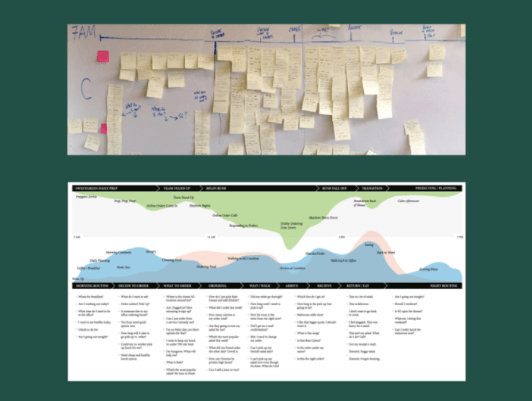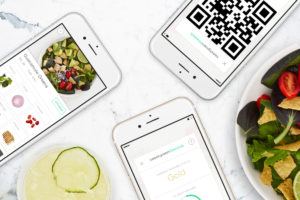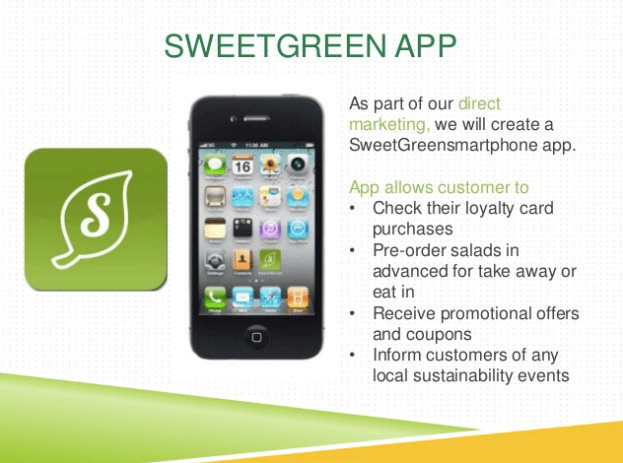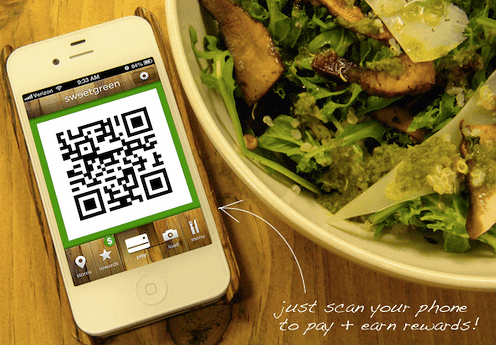The Most Data Driven Salad You Will Ever Eat

"We’re always looking for what’s next, but it’s important for us to do it the Sweetgreen way." Farryn Wiener, VP of Marketing, Sweetgreen.
Sweetgreen was founded in DC by three recent Georgetown graduates in 2007. As of October, 2017, the company had over 77 stores and 3,500 employees across the US. Known for attracting the bougie, millennial, crowd to dine on its fresh, locally sourced ingredient salads, Sweetgreen’s meteoric rise to success has been fascinating to follow. Often credited as, “the next Chipotle”, who then would have guessed that the company’s founders and investors credit the company’s use of technology and data for its stunning growth?
A Sweetgreen pitch-deck that has been posted on Linkedin shows the first anticipated iteration of the, now famous, Sweetgreen mobile app, first launched in 2013 and heralded as ahead of its time. The initial app allowed users to order ahead to skip the inevitable queue in the stores; check their loyalty card points; be updated about local sustainability events, and receive promotional offers. This was one of the first times that Sweetgreen began to really track and to use data from its customers. The app was ahead of its time in the fast-casual food space, as one of the co-founders, Neman explained, “We were one of the first in the category to release an app [in 2013]. We designed this new menu for flavor, and the analytics from our app allows us to find out what people are craving.” The app allowed the company to see what salads people were ordering. Which ingredients they were choosing to add or to remove from the set salads or what custom salads they were building. When were they ordering the salads? This allowed the company to start to optimise its menu. To purchase more of certain ingredients than others based on popularity in a given location. To know when to hire a greater or lesser number of people to be in the store or to be cutting ingredients in the kitchen based upon when people tended to order salads to go. As Neman explains, “It’s the main way we understand ingredient popularity, capture feedback, and get smarter with the seasonal products we offer. It also lets us test-drive certain ingredients and see what people are ordering over and over again, as well as not coming back for.”
Sweetgreen is known for doing big menu shake-ups with the season, as their salads are dependent upon fresh and locally sourced ingredients, so the salads are altered to accommodate what is locally available. Last week, it was announced that Sweetgreen has joined the heady throng of companies utilising the blockchain to improve its recipes and the ingredients that go in its salads to, “win the fast-casual food war”. The founders of the company expressed Sweetgreen’s focus on technology and data for the last 10 years by explaining to Bloomberg, “We’ve been building for this digital revolution in food. We’re as invested in our tech team as we are in our supply chain team.” Sweetgreen is working with its farmers and growers to implement blockchain to ensure the highest quality of crops with the greatest yield. As well, the company is utilising the data from the blockchain to ensure control over its supply chain and that its promise of ‘farm-to-fork’ for its customers is realised.

Sweetgreen recently launched a new app to the app store and it it the amalgamation of years of studying consumer habits and data and creating the perfect user experience for its customers. As Macala Wright explains, “The new app brings together online ordering, payment and Sweetgreen rewards, allowing salad loving, farm-to-table enthusiasts the ability to order their healthy fare easily. It allows the customer to visually create their salad while calculating nutritional and caloric information, all of which rolls into the iPhone Health app. Sweetgreen also lets you reorder your favorites in just five clicks, and even call an Uber to pick up your salad.” The value creation and value capture for both Sweetgreen and its customers with this new app is unmistakable.
Sources:
https://en.wikipedia.org/wiki/Sweetgreen
https://www.inc.com/leigh-buchanan/sweetgreen-2016-company-of-the-year-nominee.html
https://www.slideshare.net/tomjschrank/sweetgreen-presentation-final
http://maca.la/2016/02/sweetgreen-business-model-food-store/
https://www.bloomberg.com/news/articles/2018-03-29/sweetgreen-s-tech-driven-menu-shakes-up-the-fast-casual-food-war
https://www.forbes.com/sites/themixingbowl/2017/10/23/the-blockchain-of-food/
https://www.dotconor.com/sweetgreen/
http://maca.la/2016/02/sweetgreen-business-model-food-store/






Super interesting Eliza — I have only had low-tech interactions with Sweetgreen (which maybe makes be bougie but not as millenial?), but I will now consider downloading the app. The applications for the ingredient add/ drop information are particularly compelling — in a sense Sweetgreen is using the app to crowdsource improvements to its salads while avoiding some of the pitfalls we discussed in class (e.g., people are not going to submit crazy combinations if they then have to pay for and eat them). The opportunity to right size quantities of supplies ordered is also interesting. I am skeptical on how blockchain tech could be of any practical use to Sweetgreen or its suppliers (other then potentially adding some buzz/ tech sophistication halo effect), but we will see if it helps them!
Thanks Eliza. On the food side, I wonder if Sweetgreen is making menu decisions based on some sort of analytics (for example: “salads that feature mushrooms tend to sell well, so we will add an extra mushroom-focused salad”). Like fashion, food is also somewhat artistic, hard to “solve”, and also quite trendy. I doubt there’s a definitive formula for solving menu items, but I would guess certain ingredient mixes do pique customers’ interests and purchase decisions.
Thanks for the great post, Eliza! My fiancé LOVES Sweetgreen, so I get begrudgingly dragged in their Harvard Square location from time to time. I am usually frustrated by the incredibly long line, and your post made me think about how Sweetgreen mobile-app might be a factor. I recently read in the WSJ that some fast food and fast casual restaurants were experiencing increased congestion and other logistical problems due to higher mobile-app ordering (you can find the article here: https://www.wsj.com/articles/mobile-ordering-apps-create-problems-for-restaurants-1508119500). They had to make O20 changes to accommodate the increased traffic flow and impatient mobile-app customers. For example, some chains built a physically separate pick-up area for mobile-app orderers, so they stopped blocking the queue of traditional customers. Also, Starbucks changed its display screens to notify baristas if an order was made by mobile-app or in-person, so that they could notify the mobile-app customers when it’s ready to prevent them from milling around too much. An interesting example of how the push for data-analytics can create unintended consequences!
Great post – makes me want to grab sweet green for lunch today! Another thing I just learned they do (because a friend got chosen) is pick people who order off the app often and provide them with in app cash to buy salads in exchange for filling out feedback on different ingredients, new salads, etc. This way they can collect additional qualitative and quantitative data on what and why people are liking certain items.
Super interesting post. I go to Sweetgreen from time to time, but didn’t realize their app could be so useful. Connecting the data and content to the iPhone health app seems like an incredibly powerful way to sync right into our lives. The part about being able to connect with Uber through the app is fascinating as well. I do wonder how UberEats factors into this?
Hi Eliza, such an interesting post! I wonder how would you think this model can be applied to other industry and how will Sweetgreen adapt to a changing consumer taste, behavior, and purchasing trends.
Awesome post, Eliza! I have slowly come around to the Sweetgreen way of life over the last couple years and will miss it when I leave Boston. It leaves me wondering how other fast food spots could make similar advances. Could Chipotle make an app that provides them similar benefits? What about Blaze Pizza or other made to order style restaurants? Thanks again for a great article!
Thanks for the great post, Eliza! I agree with you that ordering online and collecting customer data do create lots of value to customers and the company. Another thing I think Sweetgreen can do with the data is to offer “customized promotion deals” to customers. Actually the problem of traditional loyalty programs (coupons or point-based promotion) is not effective in incentivizing new behaviors, instead it creates liability and can cannibalize normal sales. Analyzing the data can help Sweetgreen incentivize right customer with right promotion deals. For example, if I am a customer haven’t visited Sweetgreen for a few days, it can incentivize me to go by sending me a personalized promotion deal and offer a discount on some items I may be interested according to my purchase history.
This is a really interesting post. As a Sweetgreen App user, I completely agree that they’ve made the ordering process seamless and enjoyable. I wonder how they can use their app as a competitive advantage as other fast casual restaurants create similar apps. Furthermore, how useful is the data for the company if they are constantly changing their menu to match seasonal ingredients? If the data recommends they offer an ingredient that is not in season, how will they balance this? Thanks!
Great post! I wonder how the Company is approaching menu design. While I think it is helpful to know what customers are ordering to gauge popularity and reduce waste, is SweetGreen also using the data to test new products? Is there a happy medium between having consumers drive the menu and creating innovative items that consumers didn’t know they wanted?
I loved Sweetgreen and their value proposition. It is a great insight that, I always forget which ingredients I used in my last salad and what are my favorites. There is also a huge line at Sweetgreen all the time. The biggest challenge would be integrate this model in to their supply chain and operating model. I worked at food safety blockchain project over the summer. The importance of provenance data is incredible for food industry especially for brands like Sweetgreen. As we all know, lack of supply chain integrity at Chipotle almost killed the brand.
Really interesting post! I’m a Sweetgreen loyalist and often use the app to avoid the long queue at the Harvard Square location. I wonder if this is a competitive advantage that Sweetgreen can sustain long-term though. My view is no. It won’t take long for another competitor to create an app and use data captured to drive menu decisions and promote customer loyalty. I wonder what may be next for Sweetgreen to ensure it maintains its competitive edge through the use of data and technology.
That’s a fun idea! IBM Watson has also gotten into this game with Chef Watson (https://www.ibmchefwatson.com/)—you could play Sweetgreen’s data-driven salad game along right in your own home!
Great post, Eliza! Although I LOVE Sweetgreen and have used the app for take-out orders and to avoid the long lines, I wonder if the chain will ever launch full-service mobile delivery. I find that using Postmates and Uber Eats to order Sweetgreen usually means an extra 10-15 dollars above and beyond the price of the salad (in many instances the fee amounts to more than the salad itself), which often leads me to order from somewhere else where no fee is involved. Given the annoyance of long lines and over-crowded tables at every physical Sweetgreen location (which has not been resolved by the mobile order/ self-pick-up app), I wonder if offering delivery at peak times could help capture lost sales from those of us who are too impatient to stand around for 20 minutes (slash too lazy to leave the couch).
Thanks for the informative post! I’m curious as to the percentage of Sweetgreen customers that use the app (and therefore allow their data to be easily captured). What’s the company’s strategy for capturing data from customers who don’t have or use the app (especially as many of these them may be new or infrequent Sweetgreen customers)? How is the company using data to build a relationship with non-app users?